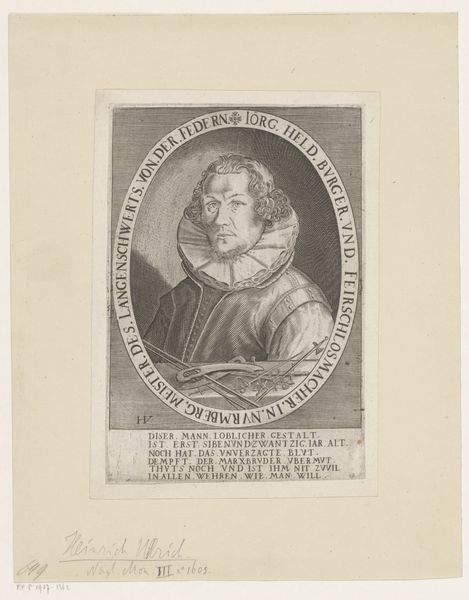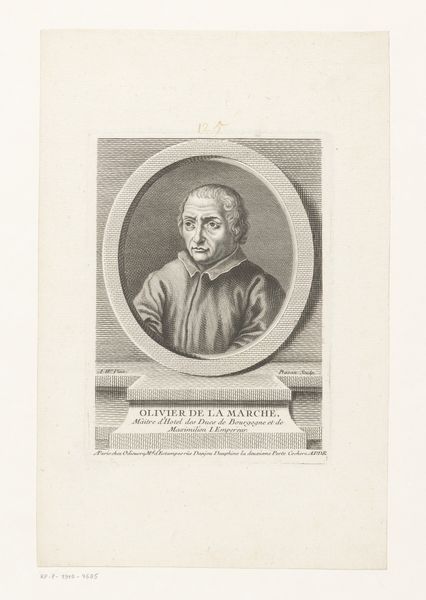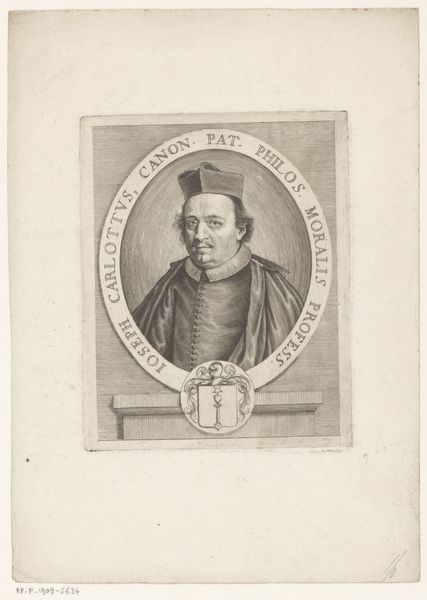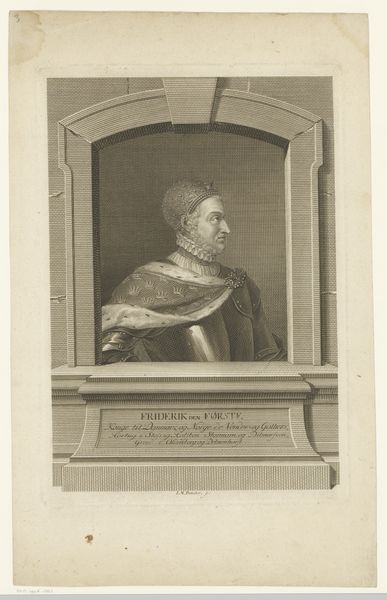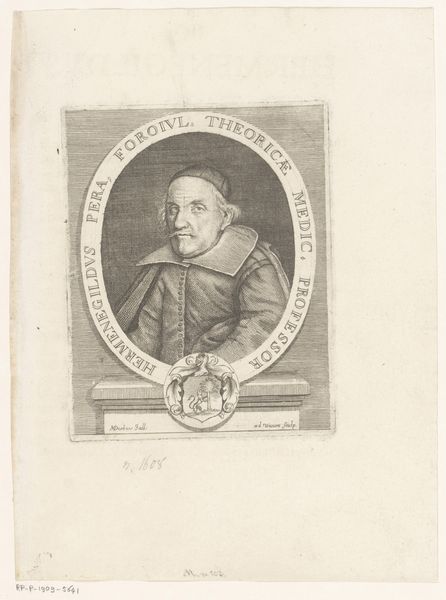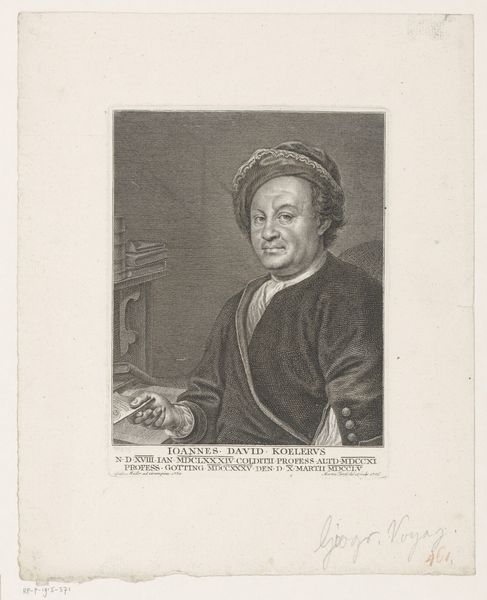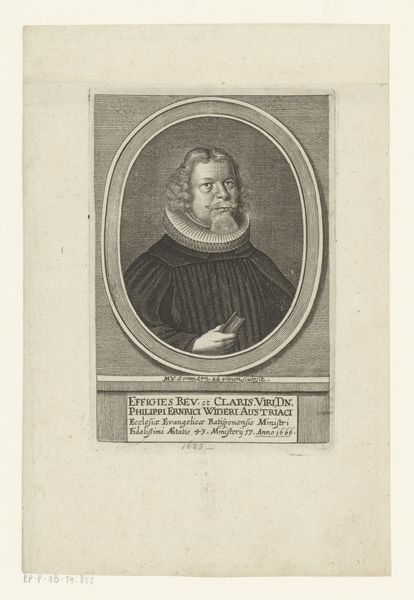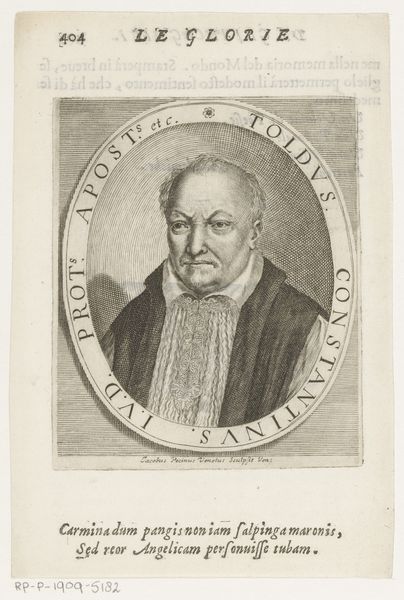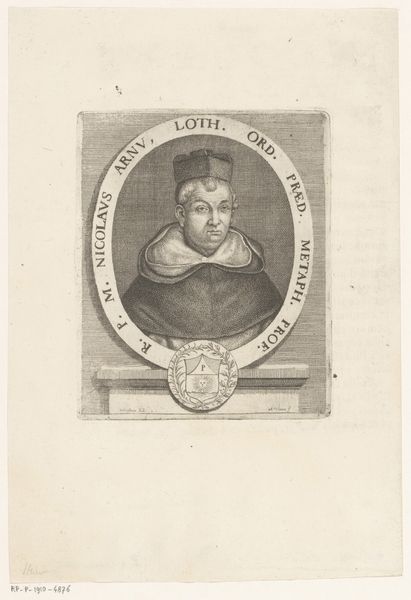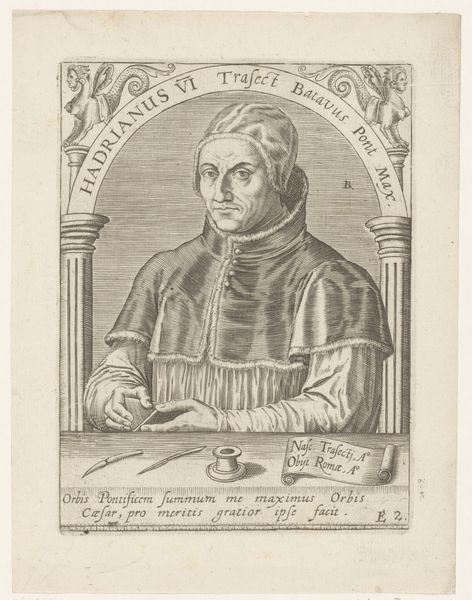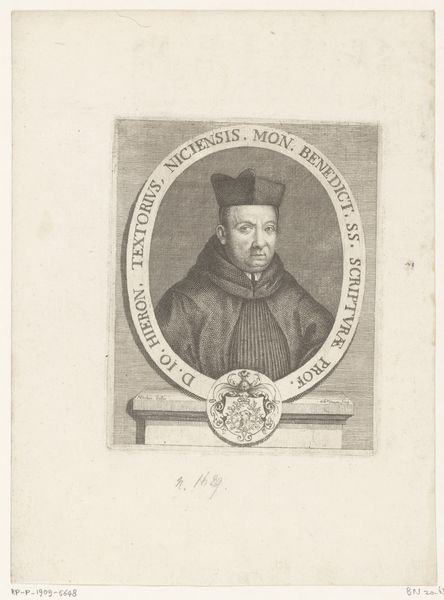
engraving
#
portrait
#
baroque
#
engraving
Dimensions: height 151 mm, width 110 mm
Copyright: Rijks Museum: Open Domain
This portrait of Guillaume Jouvenel des Ursins was made by Jean-Charles François, sometime in the mid-18th century. It’s an engraving, a printmaking process that requires immense skill. The image starts as a highly polished metal plate, often copper. The artist uses a tool called a burin to cut lines directly into the surface. These lines hold ink, which is then transferred to paper under great pressure. Look closely, and you can see the crisp, precise quality of the engraved lines, capturing the texture of fabric and the contours of the face. Engraving was a reproductive medium, a way to disseminate images widely. It existed in a complex relationship with labor, politics, and consumption. While the sitter likely belonged to the aristocracy, the engraver was a skilled artisan, mediating between the elite and the broader public. This print, like all others, is evidence of that relationship and the division of labor on which it depends. Considering the materials, tools, and social context is essential to understanding the full meaning of an artwork, and to challenging distinctions between fine art and craft.
Comments
No comments
Be the first to comment and join the conversation on the ultimate creative platform.
